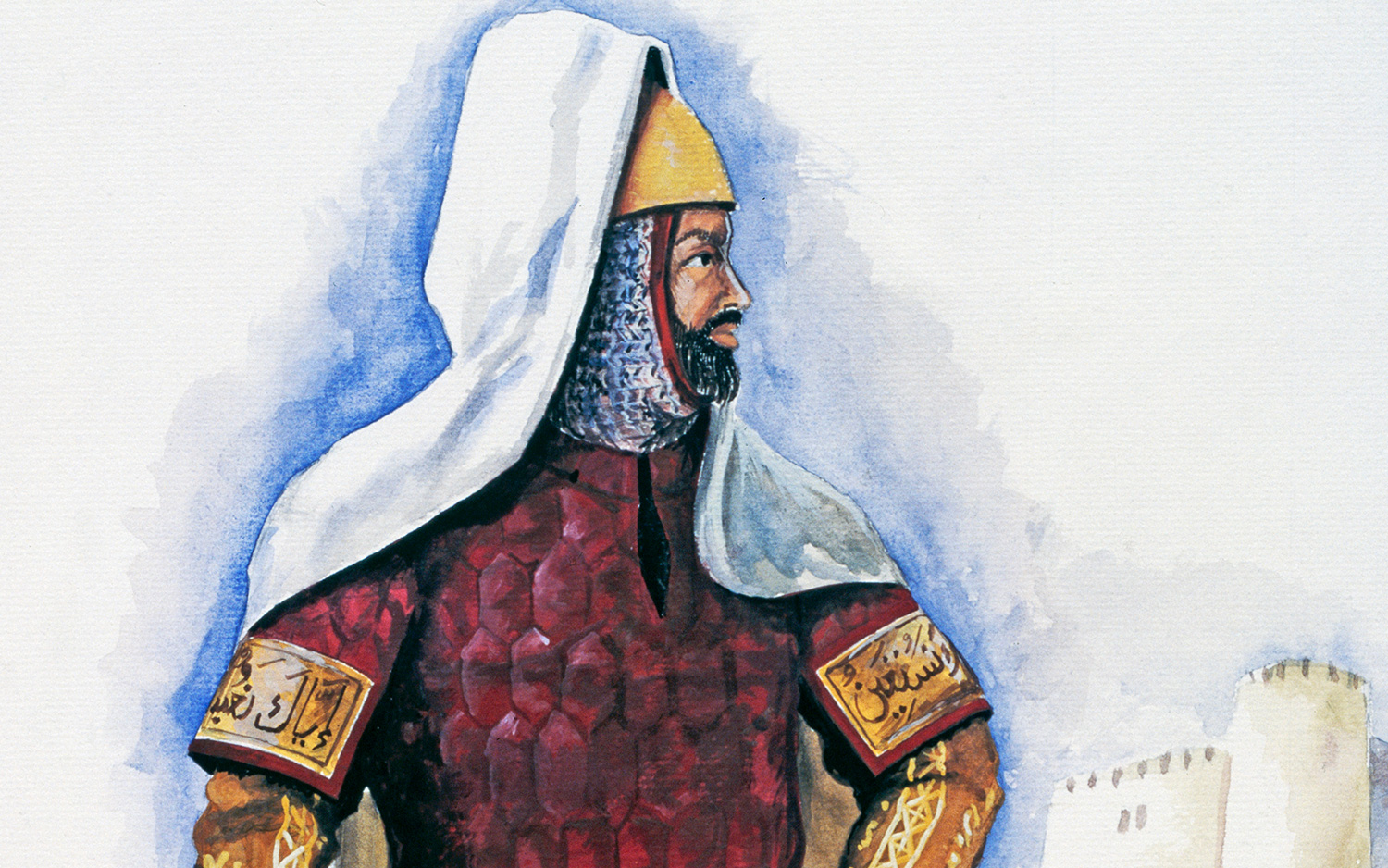This Is What Killed Medieval Sultan Who Conquered Jerusalem During the Crusades

What killed the sultan Saladin, who famously unified the Muslim world during the 12th century, recaptured Jerusalem from the Christians and helped spark the Third Crusade? Until now, it was a mystery. But by sifting through clues on Saladin's medical symptoms written more than 800 years ago, a doctor may have finally determined what illness felled the mighty sultan.
It was typhoid, said Dr. Stephen Gluckman, a professor of medicine at the University of Pennsylvania's Perelman School of Medicine, announced today (May 4) at the 25th annual Historical Clinicopathological Conference at the University of Maryland School of Medicine. Experts at the conference diagnose a historical figure every year, and past diagnoses have featured Lenin, Darwin, Eleanor Roosevelt and Lincoln.
Gluckman cautioned that a definitive diagnosis will probably never be known, given that Saladin lived before the age of modern diagnostic tools. But typhoid — an illness that people contract when they ingest food or water that's contaminated with the bacterium Salmonella typhi — seems to fit the bill, he said. [Tiny & Nasty: Images of Things That Make Us Sick]
Saladin is an iconic figure who played a pivotal role in the history of Europe and the Middle East.
"He's certainly one of the most important Muslim leaders in the era of the Crusades in the Middle Ages," Tom Asbridge, a professor of medieval history at Queen Mary University of London, told Live Science.
Former Egyptian President Gamal Abdel Nasser (1918-1970) was obsessed with Saladin, as was former President of Iraq Saddam Hussein (1937-2006), who famously had postage stamps featuring his face next to Saladin's, and even sponsored children's books featuring Saladin and himself, said Asbridge, who also spoke at today's conference.
Saladin, born in 1137 or 1138 in Tikrit, in what is now modern-day Iraq, was part of a mercenary Kurdish family. He fought with his uncle, an important military leader, against the Egyptian Fatimid Caliphate, a religious dynasty that ruled from 909 to 1171. But when his uncle died in 1169, Saladin replaced him at the age of 31 or 32, Asbridge said. After triumphing in battle, Saladin was appointed both commander of the Syrian troops in Egypt and vizier of the Fatimid caliph, according to Encyclopedia Britannica.
Get the world’s most fascinating discoveries delivered straight to your inbox.
In 1187, Saladin's army famously conquered the holy city of Jerusalem, ousting the Franks, who had taken it 88 years before during the First Crusade. His actions led to the Third Crusade (1189-1192), which ended in a stalemate between Saladin and his adversaries, including the king of England, Richard I, better known as Richard the Lionheart, Asbridge said.
However, after a mysterious fever and two-week illness, Saladin died in 1193 at age 55 or 56. Aides tried to save him with bloodletting and clysters (an old-fashioned word for enemas), to no avail.
Gluckman had few details upon which to make the diagnosis, but he was able to rule out several illnesses. Plague or smallpox probably didn't kill Saladin, he said, because those diseases kill people quickly. Likewise, it probably wasn't tuberculosis, because the records didn't mention breathing problems. And it likely wasn't malaria, because Gluckman couldn't find any evidence that Saladin was shaking from chills, a common symptom of the disease.
But the symptoms did fit with typhoid, a disease that was very common in that region at that time, Gluckman said. Symptoms of typhoid include high fever, weakness, stomach pain, headache and loss of appetite. The bacterial condition still exists today; every year, about 5,700 people in the United States (75 percent of whom get the illness abroad) and 21.5 million people worldwide come down with the bacterial infection, according to the Centers for Disease Control and Prevention.
Today, antibiotics are prescribed for people with typhoid, but, of course, those weren't available during the 12th century, Gluckman said. Still, there is cause for concern going forward, as antibiotic resistance among typhoid bacteria is growing, Gluckman added.
"In most infections, there is [antibiotic] resistance," Gluckman said. "The tried-and-true drugs are less effective these days." However, certain antibiotics still work against typhoid, he said.
Original article on Live Science.

Laura is the archaeology and Life's Little Mysteries editor at Live Science. She also reports on general science, including paleontology. Her work has appeared in The New York Times, Scholastic, Popular Science and Spectrum, a site on autism research. She has won multiple awards from the Society of Professional Journalists and the Washington Newspaper Publishers Association for her reporting at a weekly newspaper near Seattle. Laura holds a bachelor's degree in English literature and psychology from Washington University in St. Louis and a master's degree in science writing from NYU.
